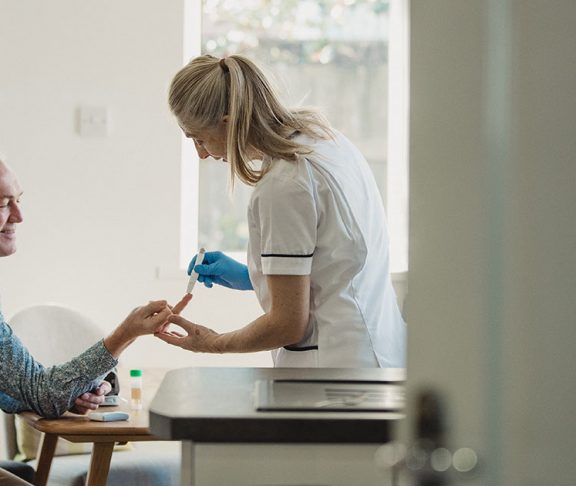Though diabetes does not discriminate, access to treatment or relevant resources still depends on socioeconomic factors.

Aaron J. Kowalski, Ph.D.
President and Chief Executive Officer, JDRF
Type 1 diabetes (T1D) doesn’t discriminate. It affects people of all races, ethnicities, ages, and socioeconomic backgrounds. Right now, we are making great progress towards cures to delay the onset of T1D and replace the insulin producing cells damaged by the disease.
In the meantime, T1D can be managed more successfully with a variety of different treatments and tools, bolstered by JDRF’s research efforts. Artificial pancreas systems, for example, greatly improve diabetes outcomes.
Sadly, not everyone who lives with T1D has the same access to these treatments and tools. These inequities can lead to negative health outcomes. Systemic racism and implicit biases exacerbate health disparities. Compared to their white peers, Black youth have a 2.2 percent higher average HbA1c. T1D technology, like continuous glucose monitors, is used more in urban areas, rather than in rural areas.
How do these disparities play out in researching T1D cures? What can be done to address the situation and improve the lives of those living with T1D?
Under-representation in T1D research
Clinical trials are a way to test the newest therapies, but there’s a problem: traditionally, most participants have been white men.
A person’s living environment, hormone levels, or body type can change the effectiveness of a therapy. What works for a young white male may not work as well for an older Black woman, for instance.
JDRF is committed to finding more ways to recruit more diverse T1D clinical trial participants. Our online Clinical Trial Finder tool helps anyone find clinical trial opportunities in their area — it’s free and only takes 60 seconds.
We also established a new Clinical Trials Working Group, organizing “boots on the ground” volunteers to promote clinical trial awareness in T1D communities they serve.
Impact of systemic racism
People living with T1D have to take insulin multiple times a day to stay alive, but taking too much, or too little, causes serious health problems. Imagine managing T1D under financial hardship and food insecurity. For many families, that is their daily reality.
These problems will only continue to burden more people as data from the CDC shows a rapid increase in T1D diagnoses in the United States, with growth spiking most sharply in Black and Hispanic youth populations.
Inequities in healthcare
Symptoms of T1D can be assumed to be type 2 diabetes (T2D) because of a person’s race, delaying a critical diagnosis. A family’s ability to see a clinician with expertise in diabetes can depend on where they live. Financial hardship can force one to choose between paying the rent and paying for insulin.
Such biases and inequities add up to something much bigger: a systemic problem that puts lives at risk.
JDRF is addressing the problem through a multi-pronged approach.
This includes advocating for coverage, affordability and choice of T1D therapies; protecting people with pre-existing conditions; offering Spanish-language and culturally-relevant resources for members of the BIPOC community; ensuring that education and support materials are available to underserved communities; and, educating our community about health disparities by partnering with peer organizations that are health equity agents of change.



